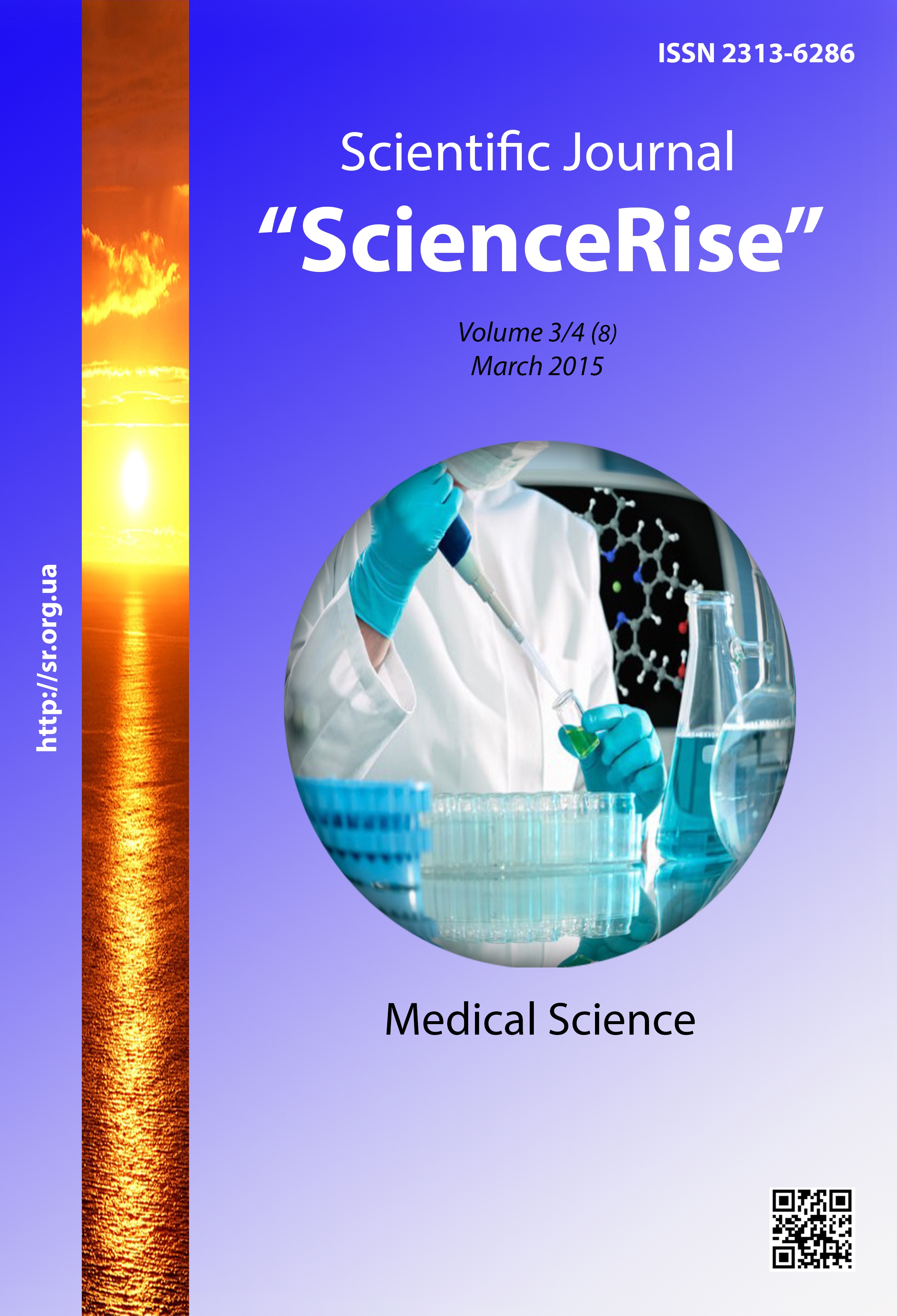Комплексний аналіз лікувального ефекту препарату нуклео цмф форте при травмах нижнього альвеолярного нерва
DOI:
https://doi.org/10.15587/2313-8416.2015.39135Ключові слова:
переломи нижньої щелепи, нижній альвеолярний нерв, Нуклео ЦМФ, біль, електрометричне дослідженняАнотація
Метою даного дослідження було порівняти клінічний перебіг та ефективність лікування переломів нижньої щелепи, що супроводжується пошкодженням нижнього альвеолярного нерва, з використанням традиційних схем лікування з додатковим використанням Nucleo CMP Forte. Використання Nucleo CMP Forte повністю усуває неприємні суб'єктивні симптоми, такі як відчуття печіння, аллодінії (спотворене болем), відчуття поколювання, крампії (посмикування). Рекомендований препарат значно знижує інтенсивність проявів всіх видів сенсорних порушень в зоні іннервації нижнього альвеолярного нерва.
Посилання
Kenbaev, V. O. (2006). Travmatolohyia cheliustno-lytsevoj oblasty. Shymkent, 118.
Tymofieiev, O. O., Viesova, O. P. (2010). Kliniko-patofiziolohichni pidkhody do klasyfikatsii urazhen' v systemi trijchastoho nerva. Sovremennaia stomatolohyia, 4, 100–102.
Karlov, V. A. (2002). Nevrolohyia: Rukovodstvo dlia vrachej. Yzdanye 2-e, pererabotannoe y dopolnennoe. Moscow: OOO «Medytsynskoe ynformatsyonnoe ahentstvo», 638.
Vejn, A. M. (2001). Bolevye syndromy v nevrolohycheskoj praktyke. MEDpress-inform, 368.
Danylov, A.B. (2007). Nejropatycheskaia bol'. Moscow: Borhes, 192.
Barker, R., Bazady, S., Nyl, M.; Skvortsova, V. Y. (Ed.) (2006). Nahliadnaia nevrolohyia: Uchebnoe posobye. Moscow: HEOTAR-Medya, 136.
Yavorskaia, E. S. (2000). Bolevye y parestetycheskye syndromy cheliustno-lytsevoj oblasty: Metodycheskoe posobye po nejrostomatolohyy. Kiev: Naukova dumka, 88.
##submission.downloads##
Опубліковано
Номер
Розділ
Ліцензія
Авторське право (c) 2015 Руслан Леонідович Фурман

Ця робота ліцензується відповідно до Creative Commons Attribution 4.0 International License.
Наше видання використовує положення про авторські права Creative Commons CC BY для журналів відкритого доступу.
Автори, які публікуються у цьому журналі, погоджуються з наступними умовами:
1. Автори залишають за собою право на авторство своєї роботи та передають журналу право першої публікації цієї роботи на умовах ліцензії Creative Commons CC BY, котра дозволяє іншим особам вільно розповсюджувати опубліковану роботу з обов'язковим посиланням на авторів оригінальної роботи та першу публікацію роботи у цьому журналі.
2. Автори мають право укладати самостійні додаткові угоди щодо неексклюзивного розповсюдження роботи у тому вигляді, в якому вона була опублікована цим журналом (наприклад, розміщувати роботу в електронному сховищі установи або публікувати у складі монографії), за умови збереження посилання на першу публікацію роботи у цьому журналі.

